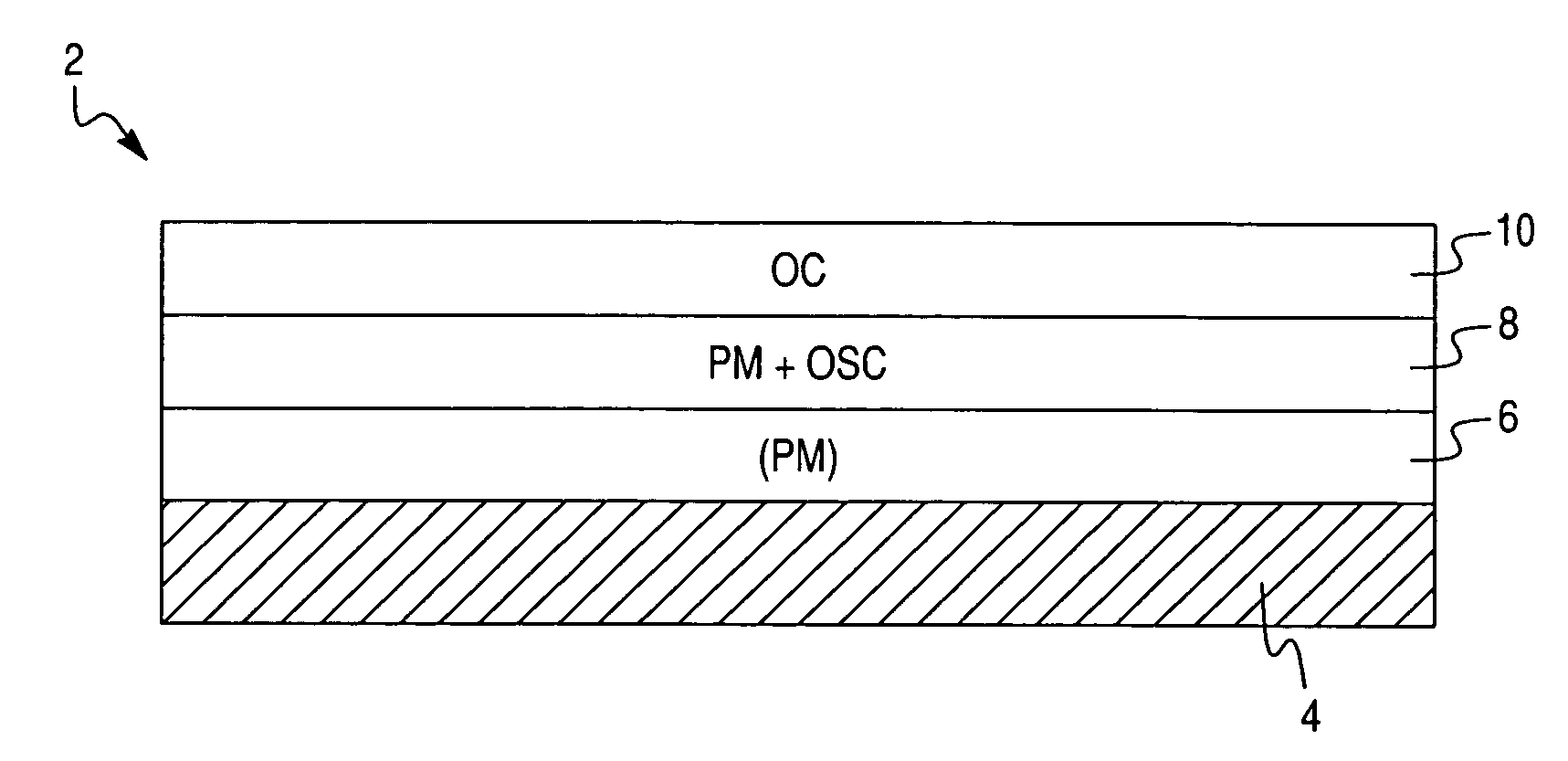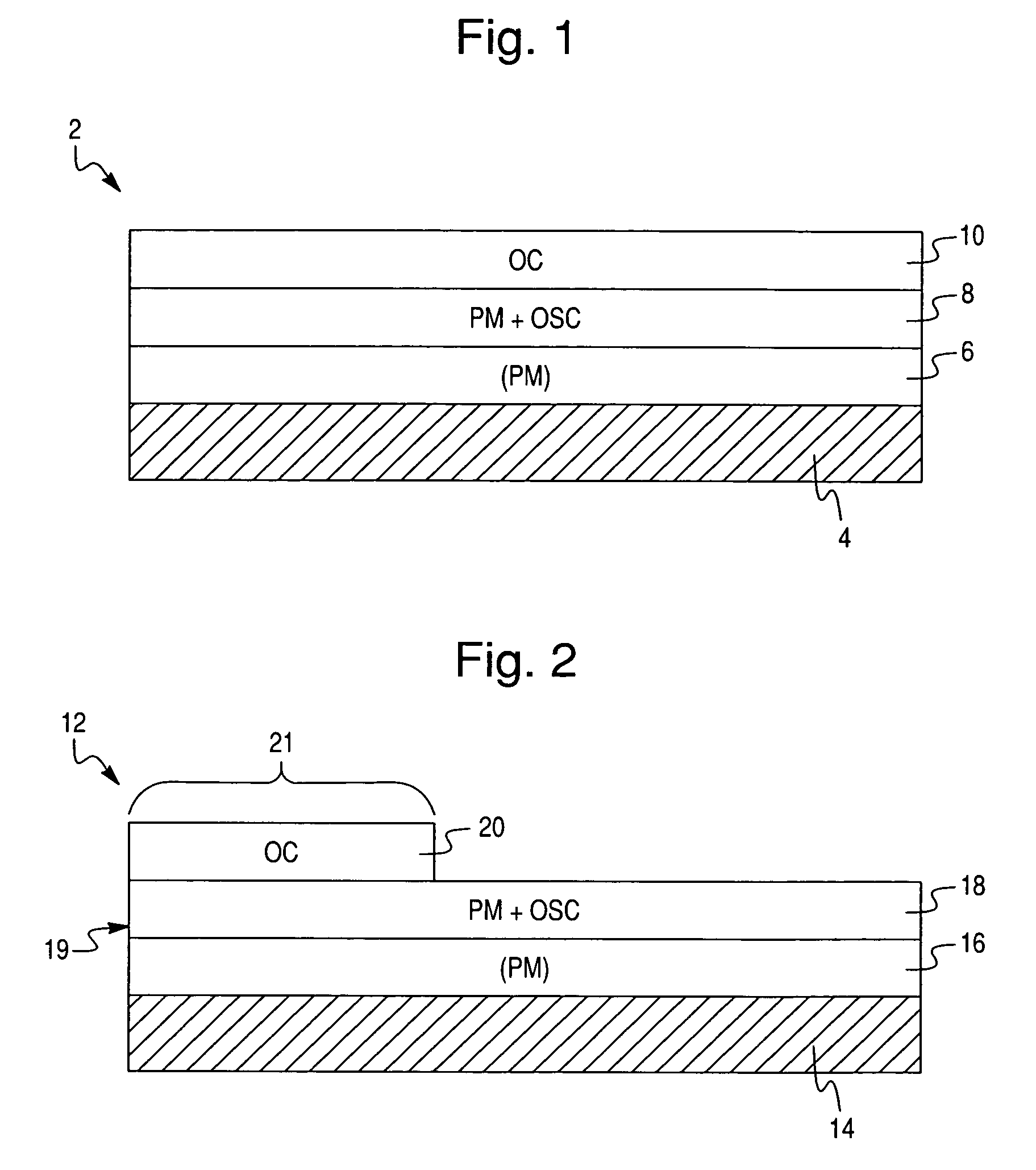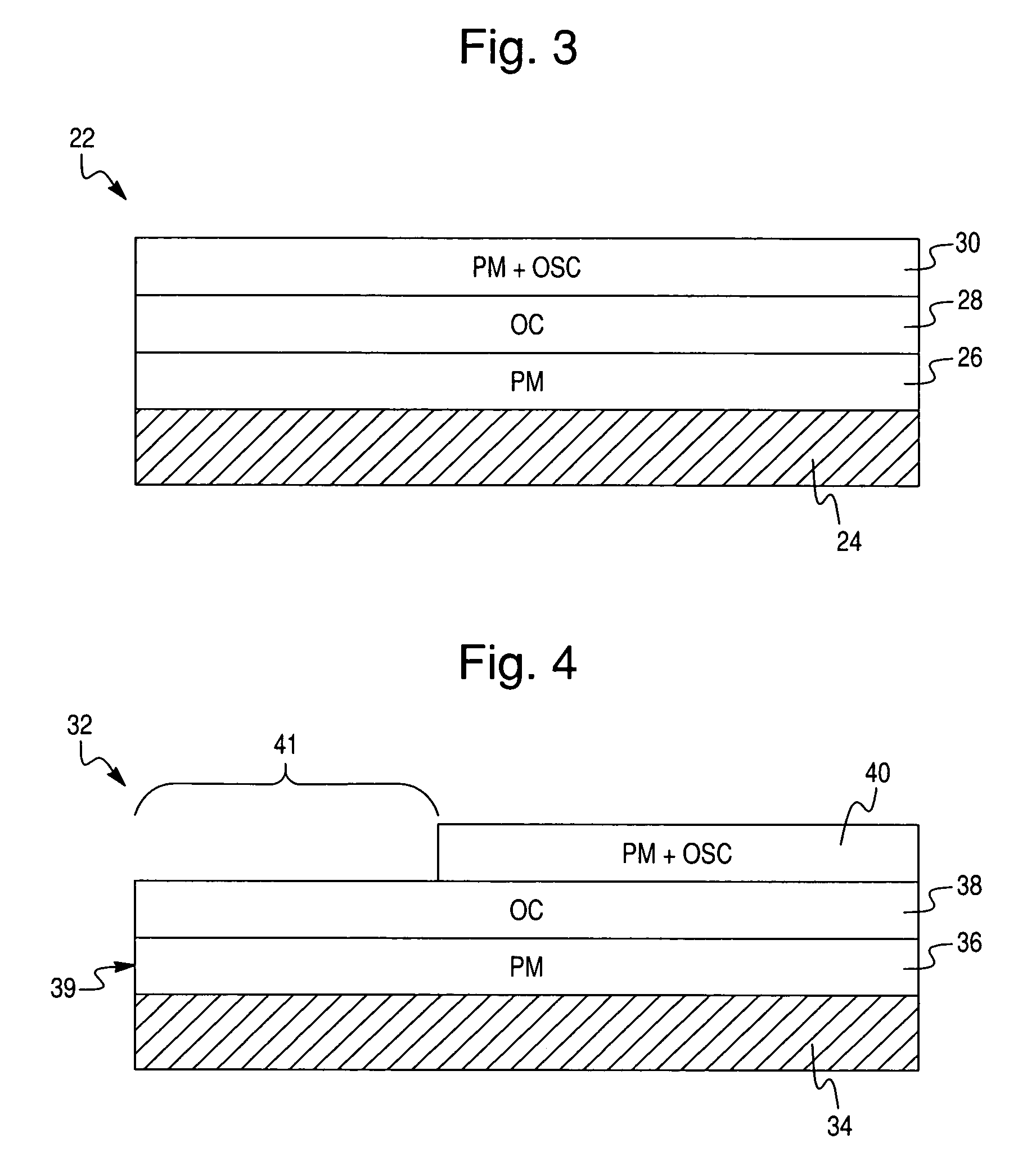Phosgard, a new way to improve poison resistance in three-way catalyst applications
a three-way catalyst and new technology, applied in the direction of catalyst activation/preparation, metal/metal-oxide/metal-hydroxide catalyst, arsenic compound, etc., can solve the problems of limiting the durability of the catalyst, affecting the long-term durability of the precious metal components, and requiring further increase of the catalyst performance level. , to achieve the effect of reducing the fouling or poisoning of the catalytic washcoat layer, preventing and/or
- Summary
- Abstract
- Description
- Claims
- Application Information
AI Technical Summary
Benefits of technology
Problems solved by technology
Method used
Image
Examples
example 1
Control Washcoat Formulation
[0056]This example exemplifies a two-layer coating formulation useful for the treatment of exhaust gases, in accordance with one embodiment of the present invention. This two-layer formulation is a three-way conversion catalyst coating, which is coated onto a substrate carrier. The carrier is a cylindrical cordierite monolithic honeycomb with a diameter of 3.66 inches and a length of 5.81 inches, and with a cell density of 600 cpsi (cells per square inch) with cell wall thickness of about 3.5 mils. Total volume is 1 liter or 61 in3. A first layer in the form of an aqueous media of ˜40% solid content was applied to the surface of the substrate. The aqueous media of the first layer contained 14.1 g of palladium impregnated as palladium nitrate solution by a Planetary mixer into 1157 g of 10% baria-stabilized γ-alumina, 109 g strontia, 109 g lanthania, 101 g neodymia and 33.6 g zirconia binder. The coated carrier was then calcined at 530° C. for 2 hours to o...
example 2
Waschoat Formulation with an Overcoat PHOSGARD Layer
[0058]This example exemplifies a three-layer coating formulation useful for the treatment of exhaust gases, in accordance with one embodiment of the present invention, which is resistant to poisoning. The three-layer formation used the first and second catalyst layers of Example 1 with the addition of a third layer coated over the second layer of Example 1. The third layer in the form of aqueous media of ˜20% solid content was applied to the surface of the second layer throughout the axial length. The aqueous media of the third layer contained 634 g baria doped γ-alumina with approximately 10% by wt. Baria, 111 g strontia, 50 g alumina binder and 25 g zirconia binder. The coated carrier was then calcined at 430° C. for 2 hours to obtain a dried washcoat of about 40 g.
example 3
[0059]The catalysts in Examples 1 and 2 were tested by published MVEG (Motor Vehicle Emissions Group) test cycles, which consists of an ECE (Urban Drive Cycle) and an EUDC (Extra Urban Drive Cycle) segment, on a vehicle with a 2.0 L engine. The ECE cycle is an urban driving cycle devised to represent city driving conditions and is characterized by low speed, low engine load and low exhaust gas temperatures. The EUDC cycle is a test devised to represent highway driving conditions and is characterized by higher speeds and higher exhaust gas temperatures and volume. The catalysts were all 100 hours engine aged with maximum catalyst bed temperature around 900° C., and the gasoline fuel added with 12 mg / L phosphorous as ZDDP. Emissions are collected and measured for each test and the results are tabulated as milligrams of gas released per kilometer traveled. The results are shown in Table 1.
[0060]
TABLE 1CatalystECEEUDCTestTestPollutant (mg / km)NOxHCNOxHCExample 197216367Example 280168469
[...
PUM
| Property | Measurement | Unit |
|---|---|---|
| length | aaaaa | aaaaa |
| thick | aaaaa | aaaaa |
| size | aaaaa | aaaaa |
Abstract
Description
Claims
Application Information
 Login to View More
Login to View More - R&D
- Intellectual Property
- Life Sciences
- Materials
- Tech Scout
- Unparalleled Data Quality
- Higher Quality Content
- 60% Fewer Hallucinations
Browse by: Latest US Patents, China's latest patents, Technical Efficacy Thesaurus, Application Domain, Technology Topic, Popular Technical Reports.
© 2025 PatSnap. All rights reserved.Legal|Privacy policy|Modern Slavery Act Transparency Statement|Sitemap|About US| Contact US: help@patsnap.com



